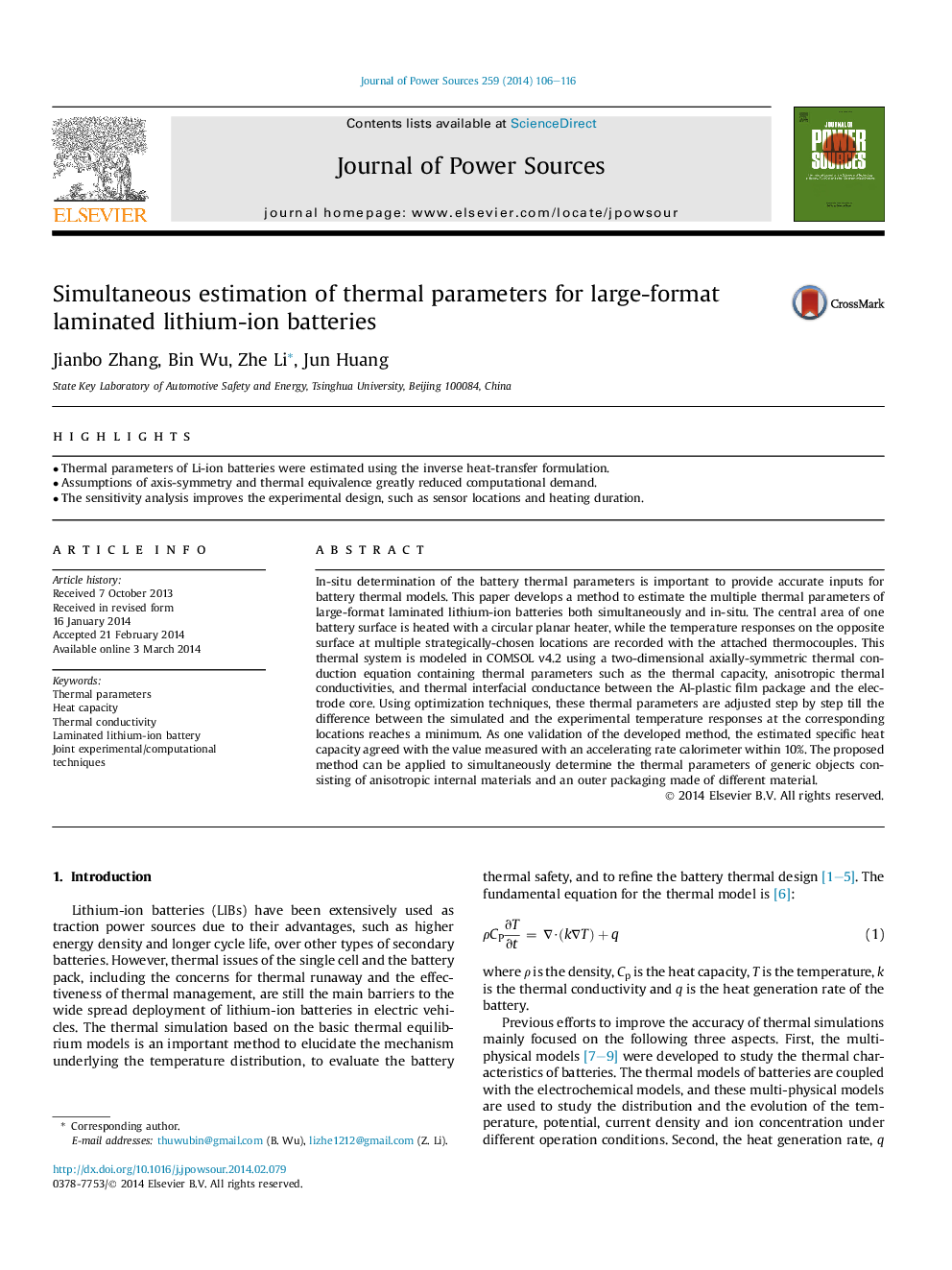| Article ID | Journal | Published Year | Pages | File Type |
|---|---|---|---|---|
| 1286864 | Journal of Power Sources | 2014 | 11 Pages |
•Thermal parameters of Li-ion batteries were estimated using the inverse heat-transfer formulation.•Assumptions of axis-symmetry and thermal equivalence greatly reduced computational demand.•The sensitivity analysis improves the experimental design, such as sensor locations and heating duration.
In-situ determination of the battery thermal parameters is important to provide accurate inputs for battery thermal models. This paper develops a method to estimate the multiple thermal parameters of large-format laminated lithium-ion batteries both simultaneously and in-situ. The central area of one battery surface is heated with a circular planar heater, while the temperature responses on the opposite surface at multiple strategically-chosen locations are recorded with the attached thermocouples. This thermal system is modeled in COMSOL v4.2 using a two-dimensional axially-symmetric thermal conduction equation containing thermal parameters such as the thermal capacity, anisotropic thermal conductivities, and thermal interfacial conductance between the Al-plastic film package and the electrode core. Using optimization techniques, these thermal parameters are adjusted step by step till the difference between the simulated and the experimental temperature responses at the corresponding locations reaches a minimum. As one validation of the developed method, the estimated specific heat capacity agreed with the value measured with an accelerating rate calorimeter within 10%. The proposed method can be applied to simultaneously determine the thermal parameters of generic objects consisting of anisotropic internal materials and an outer packaging made of different material.
